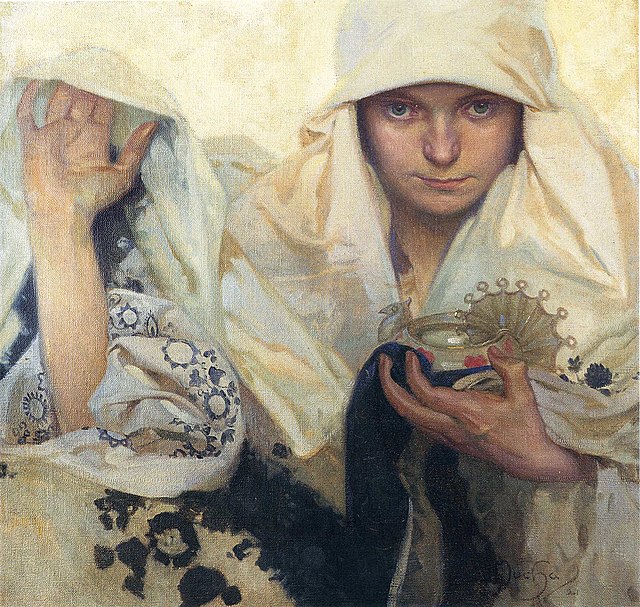In medieval and ancient philosophy the Wheel of Fortune, or Rota Fortunae, is a symbol of the capricious nature of Fate. The wheel belongs to the goddess Fortuna who spins it at random, changing the positions of those on the wheel: some suffer great misfortune, others gain windfalls. The metaphor was already a cliché in ancient times, complained about by Tacitus, but was greatly popularized for the Middle Ages by its extended treatment in the Consolation of Philosophy by Boethius from around 520. It became a common image in manuscripts of the book, and then other media, where Fortuna, often blindfolded, turns a large wheel of the sort used in watermills, to which kings and other powerful figures are attached.
From an edition of Boccaccio's De Casibus Virorum Illustrium showing Lady Fortune spinning her wheel.
The "Queen of Fortune", helped by four other personifications, turns her wheel.
Illustration by Jean Miélot to Christine de Pizan's Epitre d'Othéa; Les Sept Sacrements de l'Eglise, c. 1455 at Waddesdon Manor
The Wheel of Fortune by Edward Burne-Jones, 1875–1883
Destiny, sometimes also called fate, is a predetermined course of events. It may be conceived as a predetermined future, whether in general or of an individual.
Fate, by Alphonse Mucha





